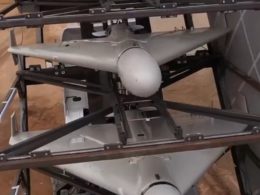The significance of FPV (First-Person View) drones in modern warfare is undeniable, as is the advantage gained by the side that supplies them in greater numbers. This assertion, as reported by Forbes Ukraine, reflects the current situation in Ukraine, where the production of these crucial military assets is hampered by a severe shortage of skilled engineers.
Previous reports indicated that Ukraine increased its use of FPV kamikaze drones in combat by at least 25 times between February and September 2023. The increased utilization necessitates a corresponding rise in production.
According to Maxim Sheremet, founder of DroneSpace company, Ukraine currently produces about 50,000 FPV drones each month, significantly less than Russia’s estimated 300,000. The disparity in production capacity is attributed to a lack of thousands of engineers needed for drone manufacturing, as well as hundreds more for reconnaissance and combat UAVs (Unmanned Aerial Vehicles).
Ukraine’s drone industry, encompassing approximately 200 manufacturers, is currently able to meet only 10-15% of the army’s needs, as stated by Lyubov Shipovich, founder of the Dignitas Foundation. The country needs about 200,000 FPV drones monthly, a figure equating to the annual demand for artillery shells.
The talent shortage extends to the production of larger surveillance and combat drones. Denis Cherednichenko, co-founder of DeViRo company, which manufactures large reconnaissance drones like “Leleka,” acknowledges the scarcity of skilled labor but notes their efforts in training specialists in-house. President of the Drone Manufacturers Association “Technological Forces of Ukraine” and chairman of the supervisory board of the defense-technical company FRDM, Vadim Yunik, provides a conservative estimate of a shortfall of 2,000 engineers in the FPV drone manufacturing sector alone.
Project “Black Box”: How Ukrainians unknowingly crowdfunded deadly new drone fleet
The root of this shortage traces back to Ukraine’s independence era when universities did not produce enough graduates to meet current market demands, a situation exacerbated by many engineers moving abroad. “Where will we get so many engineers?” asks Heorhii Tskhakaia, advisor to the Minister of Digital Transformation, highlighting the lack of demand for such skills before the full-scale war.
The older generation of Ukrainian engineers, mostly educated during the Soviet era, is seen as intelligent and qualified but not dynamic enough to keep up with the fast-paced developments in drone technology. For instance, FPV drones have evolved from single-use to models with advanced drop systems in just a year and a half.
Defense Express notes that Russia has been systematically addressing its FPV drone production for about a year, with state media regularly reporting on various drone developments like Vorobey, Bekas, VT-40, etc. The Russian Ministry of Trade is implementing a national project to develop unmanned aviation systems by 2030, aiming to involve 1 million professionals in this sector.
SBU unveils new details of marine drone attack on Crimean Bridge
Additionally, Russia receives a consistent supply of Shahed kamikaze drones from Iran, deploying dozens nightly to attack Ukrainian cities. In the early hours of 25 November, on Holodomor Memorial Day, the Russian military initiated its largest drone attack on Ukraine to date, launching 75 Shahed-131/136 drones.
Along with increasing FPV drone production, Russia is enhancing its existing strike drones. Following the 25 November attack, Russian forces began applying carbon fiber coatings to some Shahed drones, making them more difficult to detect visually and by radar. It was previously reported that Russia has also upgraded its Lancet drones, which are now capable of penetrating anti-drone nets.
On 17 November, Ukraine’s Minister of Strategic Industries, Oleksandr Kamyshin, stated that Ukraine had increased its production to dozens of long-range drones monthly, similar to Iran’s Shahed-136 model.
In contrast, FPV drone assembly in Ukraine predominantly involves manual labor, such as soldering ready-made parts. This labor-intensive process, coupled with the current talent gap, poses a significant challenge to scaling up production. Automation and the establishment of “FPV drone factories” with conveyor belts and robotic lines are seen as long-term solutions, but for now, scaling production on current technologies remains the only viable option.
Read also:
- Ukroboronprom refutes claim of exporting spare parts to Russia
- The Economist: Russia’s EW superiority emerges as Ukraine’s key weakness on frontline
- SBU unveils new details of marine drone attack on Crimean Bridge
- DeepState: Russians have built over 6,000 km of fortifications in occupied territories








